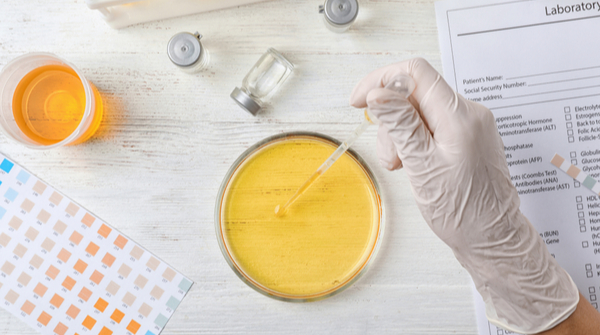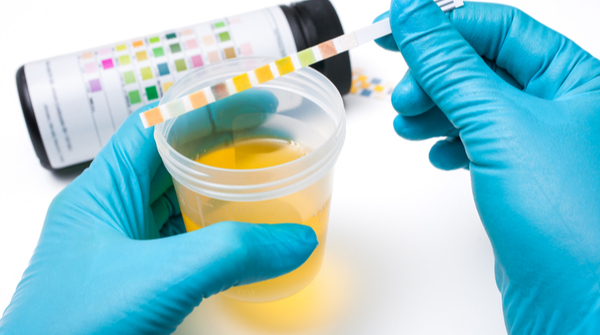Measuring sugar levels in the blood consistently is the basic requirement for living healthy with diabetes. An important aspect related to this is measuring the amount of sugar in your urine. If glucose is present in your urine, it is a sign of extremely high sugar levels in the blood which are removed by the kidneys. Let’s learn about urine test for diabetes or urinalysis.
Diabetes Urine Test
Contrary to the blood sugar tests for measuring sugar levels in blood, a diabetic can conduct this urine test using a urine test strip and a container for collecting urine. However, before conducting the test to check glucose levels, it is advisable to consult your doctor to know the best time of the day to take samples, which means assessing whether to do it before meals or after meals.

The urine test for diabetics requires a sample which hasn’t been in your bladder for long. Overnight samples are a strict no-no as they are bound to give distorted readings. Before collecting the sample, one must ensure to clean the genital area as urine is highly sensitive for bacteria formation. Once the sample is collected, the test strip is inserted into it and the colour of the strip gives the result.
Who Should Get a Urine Test for Diabetes?
In simple terms, those keen to control diabetes must undertake regular tests. It is advisable to know blood sugar normal range in order to assess when levels go higher than normal.
Urine tests in diabetes are done to check both sugar and ketones in the urine, unlike tests done to check glucose levels in the blood. Even if either of the two is present, it means that enough insulin is not being produced.
Urine ketone testing is most often necessary in people with type 1 diabetes who have glucose levels in the blood of over 300 mg/dl, who are sick, or who have symptoms of diabetic ketoacidosis, an acute complication of diabetes.

What to Expect During a Urinalysis?
Test at Doctor’s Clinic
- Although the doctor will explain the steps to be taken for the test, the following points briefly explain the process:
A plastic bottle will be given to collect samples. - While you urinate into the cup, in order to avoid contamination with bacteria or cells in your skin, you should only collect the middle part of the urine that comes out (the midstream, also called a “clean catch”). The first and last part of the urine can go into the toilet.
- Place the lid on the cup and wash your hands.
- Leave the bottle in its designated place.
- The sample will then be analysed for the presence of glucose and ketones. The results should be ready shortly after the sample is given.

Test at Home Using Strips
The strips used for at-home sugar tests are available at the local chemist shop and are coated with chemicals that react with ketones. Once the strip is inserted into the urine sample, the excess urine must be shaken off the strip and one must wait for it to change colour to display the result.
The strip then must be compared with the colour chart to assess the number of ketones present in urine.
Analysing the Results of Urine Test for Diabetes
The results of urine tests are measured by referring to the colour chart and matching the colour with that of the strips. In the absence of sugar in your urine, the colour of the strips won’t change.
The colour of the strip will change based on the level of sugar present in the urine. Urine tests are useful for detecting very high blood sugar levels and hence must be discussed immediately with your doctor.
Glucose in blood generally spikes post-meals and during the early morning hours. Monitoring blood sugar levels in diabetes on a daily basis using a glucometer is essential as it gives you information about the rise in blood sugars and the impact of your dietary and lifestyle changes.
Read More: Hypoglycemia in Children: Behavioural Changes and Symptoms
For more information download the BeatO App.





